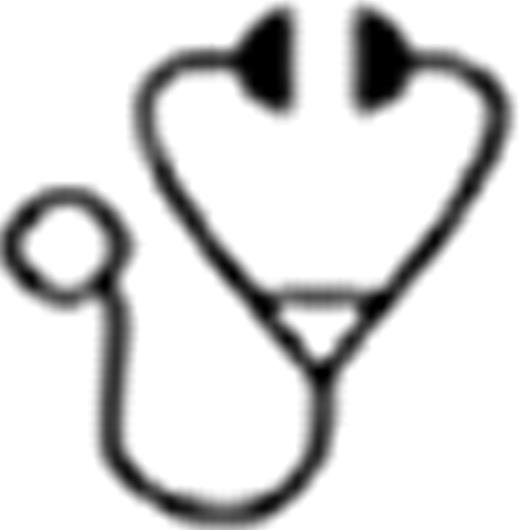Abstract
Abstract  2214
2214
Bernard-Soulier syndrome (BSS) has been historically described as an autosomal recessive disease, and more than 50 different mutations have been identified in homozygous or double-heterozygous patients. However, a few reports have suggested that BSS may be occasionally transmitted in an autosomal-dominant fashion. In 2001, we described six Italian families that were previously diagnosed with Mediterranean macrothrombocytopenia and possessed the monoallelic c.515C>T transition in the GPIBA gene, which results in a p.Ala156Val substitution (Bolzano mutation) in GPIb alpha (Savoia et al, Blood 2001;97:1330–5)
Since 2001, we have searched for this mutation in all patients referred to us for a non-syndromic, autosomal dominant form of inherited macrothrombocytopenia of unknown origin. Screening for the c.515C>T mutation identified 42 carriers and genetic molecular testing in all of the available relatives indicated that this mutation was present in 61 additional individuals. When the 42 families described here are added to the 6 families previously described, our database of 210 pedigrees of inherited thrombocytopenia includes 48 families with monoallelic, dominant BSS caused by the Bolzano mutation; 22 of the pedigrees have MYH9-related disease, 21 have thrombocytopenia 2 caused by ANKRD26 mutations (Noris et al, Blood 2011;117:6673–80), and 10 pedigrees have the classic biallelic, recessive form of BSS (Savoia et al, Haematologica 2011;96:417-23). Our experience therefore indicates that the Bolzano mutation is the most frequent cause of inherited thrombocytopenia in Italy. Analyses of the geographic origin of affected pedigrees and haplotypes indicated that this mutation originated in southern Italy.
The bleeding tendency was variable, with 42% of the cases presenting recurrent, spontaneous hemorrhages that only rarely were severe (5 patients required medical intervention and platelet transfusions). 19 women delivered 32 children (vaginal and caesarean births) with no platelet transfusions, and excessive bleeding was reported in one case only. None of the patients experienced abnormal bleeding associated with dental extractions or surgery. Thrombocytopenia was usually mild (a few subjects even had normal platelet counts), and electronic counters overestimated the degree of platelet deficiency with respect to manual counting with optical microscopy in a Neubauer chamber (Table 1). Platelets were larger than normal in most patients, and their GPIb/IX/V content was 50% of controls. However, in vitro platelet aggregation in response to ristocetin 1.5 mg/mL was defective only in 22% of cases. The serum thrombopoietin level was two-fold greater than that of healthy subjects and similar to that observed in a case series of patients with ITP. Beta 1-tubulin polymorphisms, which have been associated with platelet size and function (Freson et al, Blood 2005;106:2356–62), did not explain the variation in clinical and laboratory features of our patients.
In conclusion, our study indicates that the monoallelic Bolzano mutation is a frequent cause of macrothrombocytopenia in Italy and that this mutation induces a mild form of BSS that is often misdiagnosed with ITP. Further analyses in other countries will reveal whether this form of the disease is exclusive to Italy or if it also affects other populations.
Platelet count and size in patients with the Bolzano mutation in GPIb alpha.
| . | Patients . | Controls . |
|---|---|---|
| mean±SD (range) | ||
| Manual platelet count, x10e9/L | 114±36† (42–184) | 276±50 (170–420) |
| Impedance platelet count, x10e9/L | 89±33**† (21–147) | 255±53 (141–396) |
| Optical platelet count, x10e9/L | 103±32*† (21–162) | 280±54 (164–412) |
| MPV, fL, by optical counter | 15±1.7† (9.7–17.8) | 8.2±0.8 (7.1–11.1) |
| MPD, um, by optical microscopy | 3.6±0.5† (2.6–5.1) | 2.4±0.3 (1.9–3.4) |
| . | Patients . | Controls . |
|---|---|---|
| mean±SD (range) | ||
| Manual platelet count, x10e9/L | 114±36† (42–184) | 276±50 (170–420) |
| Impedance platelet count, x10e9/L | 89±33**† (21–147) | 255±53 (141–396) |
| Optical platelet count, x10e9/L | 103±32*† (21–162) | 280±54 (164–412) |
| MPV, fL, by optical counter | 15±1.7† (9.7–17.8) | 8.2±0.8 (7.1–11.1) |
| MPD, um, by optical microscopy | 3.6±0.5† (2.6–5.1) | 2.4±0.3 (1.9–3.4) |
: p<0.05,
: p<0.001 compared to manual method;
: p<0.001 compared to normal subjects
Cattaneo:Eli Lilly Daiichi Sankyo: Honoraria; AstraZeneca: Honoraria, Research Funding.
Author notes
Asterisk with author names denotes non-ASH members.

This icon denotes a clinically relevant abstract

This feature is available to Subscribers Only
Sign In or Create an Account Close Modal